Since returning home from Chicago, I have taken great enjoyment in sharing my rescued strays with my close friends. I have come to calling my newly acquired pipes “rescued strays” or pipes that “followed me home”, as I feel that it somehow makes my purchasing them seem like a benevolent act rather than a purely selfish one.
While delicately removing each precious piece from its sock, such as this incredible feat from the hottest stars of the pipe-world, Adam Remington, I noticed a common thread tying together a great deal of my purchases: along with acquiring the work of three pipe makers with fewer than ten years combined experience, every smooth-finish pipe with the exception of one had a small amount of revealed plateau. In fact, in retrospect, it was this plateau that drew me initially to these pipes.
This is a fascination that was either previously subconscious or nonexistent, but it is now something that I wholeheartedly embrace. Being a person highly obsessed with logic, to the point that some have called me Vulcan (I assume they meant this as an insult, but I take it as the highest compliment), I started engaging in some self-reflection to determine what exactly I find so enthralling about something that, aesthetically, is nothing more than a small rough piece of wood.
For those of you who do not know the term plateau in respect to pipes, you must first look at the material from which briar pipes are made. True briar pipes are made from the root of something called a heath tree, or erica arborea, which looks like this picture to the left. It is quite a beautiful plant, but to the pipe smoking community, the real beauty is hidden below the ground. That is where the dry root of a mature, well aged heath tree rests, waiting to be found.
This buried treasure is often found in the shrub-lands, sometimes on the sides of cliffs. Once the cutters have managed to get to the plant and harvest the root, hopefully in a manner than allows the plant to continue surviving, they now have something known as the burl. This burl is then sliced into pipe-sized blocks, either called ebauchon or plateau, depending on its appearance.
As you might imagine, the majority of these pieces are are smooth, since they come from the inside of the root, much like the majority of the pieces of a puzzle don’t have a flat side; these are the ebauchon blocks. A certain number of those pieces, however, still have the rough edge of the root surface visible. It is this visible root that is known as plateau.
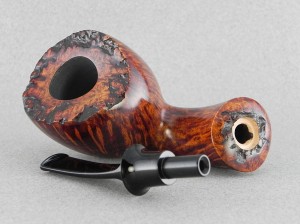 In most cases, a pipe is smooth or rusticated or sandblast. There are some other options, like specialty finishes that are unique to particular companies and artisans. Sometimes, however, a smooth pipe will leave a little bit of the plateau of the briar showing. This is something, to me, that is very special and is an art-form in and of itself.
In most cases, a pipe is smooth or rusticated or sandblast. There are some other options, like specialty finishes that are unique to particular companies and artisans. Sometimes, however, a smooth pipe will leave a little bit of the plateau of the briar showing. This is something, to me, that is very special and is an art-form in and of itself.
Now, I’m not a pipe maker. I’ve bought myself a pre-drilled block of briar, but it is still sitting at home waiting for me to dig in and prove to myself, once and for all, why I don’t do anything artistic. For this reason, I have no idea what exactly goes into showing off a section of plateau on an otherwise smooth pipe. To get this information, I contacted my new friend and very talented pipe maker, Steve Liskey.
“If it is intentional, it’s all about the position of the block,” Steve says. “The piece you just bought from me was unintentional, but either way it lends a form of organic style to the pipe.”
I then asked Steve about the process of cleaning the plateau up and making it flow visually into the rest of the pipe. “In truth, I don’t do anything different than a normal finish work. I just pretend it’s not there. If it is really deep, I use a small wire brush to shine it before I finish sanding the surrounding area, then I stain and buff. I try not to do anything because it tends to ruin the netual finish of it. A small wire brush is less abrasive and does a great job putting a shine on it before buffing.”
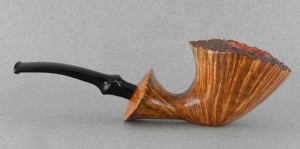 “Natural plateau looks better when its ridges and valleys are dense and somewhat deep,” Bill Shalosky says. “I remove the bark and dirt by sandblasting at low pressure. I usually do this on all blocks no matter the design. This does two things. First, it can give the option of utilizing the natural edge. Secondly, it allows me to check for any cracks or large fissures that could be hiding under the bark. When a pipe has the natural edge included I normally use the same stain for the smooth portions and plateau portions. The plateau usually absorbs the stain differently, giving it a darker appearance than the rest of the pipe.”
“Natural plateau looks better when its ridges and valleys are dense and somewhat deep,” Bill Shalosky says. “I remove the bark and dirt by sandblasting at low pressure. I usually do this on all blocks no matter the design. This does two things. First, it can give the option of utilizing the natural edge. Secondly, it allows me to check for any cracks or large fissures that could be hiding under the bark. When a pipe has the natural edge included I normally use the same stain for the smooth portions and plateau portions. The plateau usually absorbs the stain differently, giving it a darker appearance than the rest of the pipe.”
Throughout this piece have been some stellar examples of how an artisan can utilize plateau and not only incorporate this natural occurrence into the design of the pipe, but also use it to create a new and beautiful look.
With all of this background information, I still have not fully addressed the issue that I set out to elucidate: why do I enjoy the presence of plateau on a pipe?
There are many reasons, I suppose, but there are two primary answers to which I have returned constantly throughout this week of contemplation, though they seem contradictory: consonance and dissonance.
When an artisan takes a piece of briar featuring beautiful plateau and decides not to simply eliminate the rough and gnarled exterior, but instead decides to synthesize it into the project and work with it to find a new existence for the rugged wood, he is contriving to work in harmony with nature. Think back on the two processes described above from Bill and Steve: both men take extra care not to damage the plateau of the briar and strive to bring out its natural beauty with a gentle touch, either with a wire brush or a low-pressure sandblast. Why would they take such care to protect something that might, to some, be considered unattractive?
A pipe maker is more than a wood carver; he is someone who finds ways to enhance the elegance of nature through refining what has already been created. In order to do this properly, he or she must first grasp the artistry already found within that block of wood. Then, and only then, can the true pulchritude of the briar be brought to fruition in the form of a pipe. This is the harmony, or consonance.
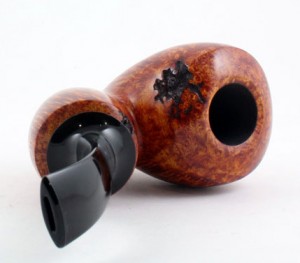 A perfectly smooth and shaped pipe is a true sight to behold. I often find myself turning such a pipe in my hand, admiring the flame grain, cross grain, straight grain, and the bird’s eye. I will be in awe of the perfect form of the pipe. What am I to think, then, when I find a patch of rough and gnarled wood splotched in the middle of an otherwise flawless pipe? When Lauren saw plateau on a pipe for the first time while at the Chicago Pipe Show she thought it was an accident, an example of where the carver slipped up.
A perfectly smooth and shaped pipe is a true sight to behold. I often find myself turning such a pipe in my hand, admiring the flame grain, cross grain, straight grain, and the bird’s eye. I will be in awe of the perfect form of the pipe. What am I to think, then, when I find a patch of rough and gnarled wood splotched in the middle of an otherwise flawless pipe? When Lauren saw plateau on a pipe for the first time while at the Chicago Pipe Show she thought it was an accident, an example of where the carver slipped up.
In his book, Music: An Appreciation, Roger Kamien defines dissonance as “An unstable tone combination… its tension demands an onward motion to a stable chord. Thus dissonant chords are ‘active’; traditionally they have been considered harsh and have expressed pain, grief, and conflict.” Dissonance serves several purposes: it demands movement toward stability and it increases the satisfaction of the listener once that stability is achieved — when you hear a dissonant chord, it makes the next pure chord sound all the sweeter.
To me, plateau on a pipe can also serve this purpose. While it is beautiful in its own right, as represented by the harmony aspect mentioned above, plateau also serves to make the smooth, refined area of the pipe even more visually appealing. It requires that the artist work all the more to achieve perfection on the smooth, polished area of the pipe, a demand that pipe makers are more than capable of satisfying. When done correctly, revealing plateau is one of the most beautiful aesthetic decisions possible.
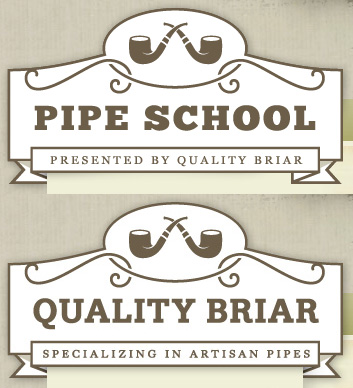
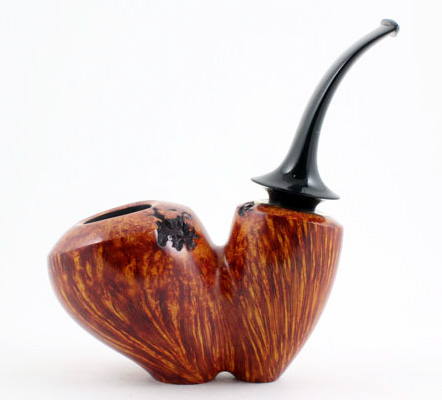
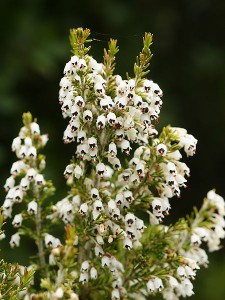
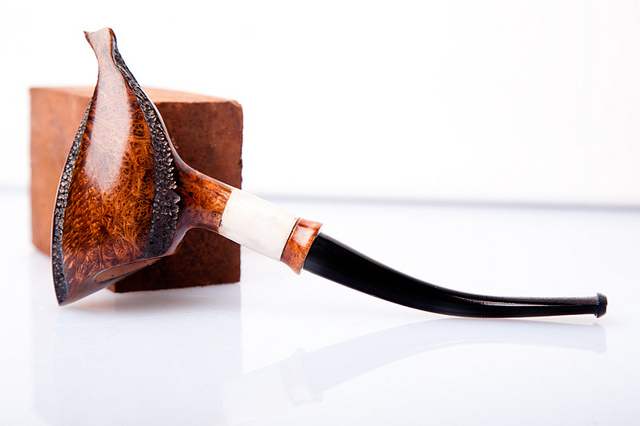

 Subscribe to RSS feed
Subscribe to RSS feed
Very nice and useful article.
I came across a picture of my pipes.
http://golowacz.pl/fajki/blog-2/files/733d21649cfba13dda4441601d571181-26.html
When asked, would you agree, without hesitation share this photo
All the best. Jan.
Jan,
Your name is on the title of the photo, if I’m not mistaken. Just in case this is not satisfactory attribution, I have altered the piece to have a caption for the photo.
Sorry for the mix-up and thank you for the lovely photograph.
Cheers,
Ethan
I’ve heard that among the potters in Japan there was a tradition that when a particularly beautiful and ‘perfect’ piece was thrown the potter would, before taking it from the wheel, intentionally dent or scratch it, creating a small imperfection. This aesthetic, call ‘wabi sabi’ is sometimes described as one of beauty that is “imperfect, impermanent, and incomplete” and is an artistic expression of the ideals of Zen Buddhism.
This aesthetic honors nature and the imperfection of life with all it’s asymmetry, irregularity, simplicity, and shows appreciation of the ingenuous beauty of natural objects.